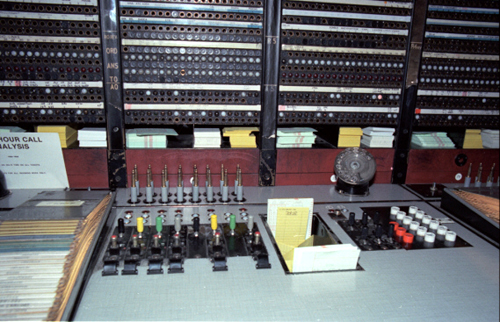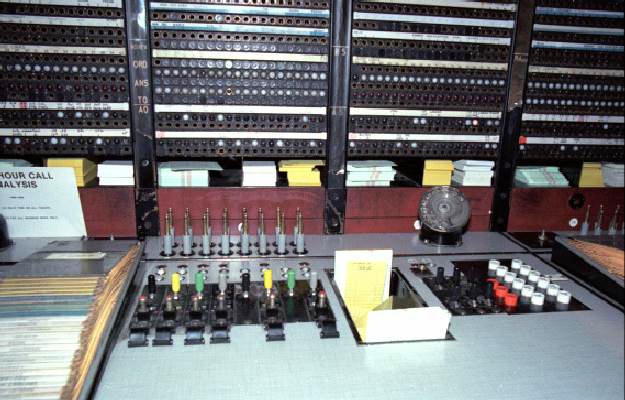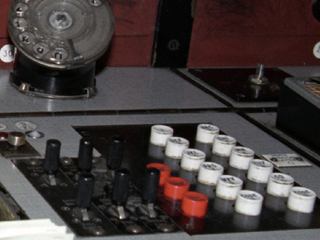 |
Opposite is a typical continental/intercontinental board layout. Far left of photo the Visible Index File (VIF). |
Keyshelf and Jackfields
Jackfield L to R: Various jack multiples, 20 way strips. Jackfields with supervisory lamps. Telephone tickets, white header cards, yellow delay cards.
 |
Keyshelf - This has a Formica finish unlike the earlier boards which had a red fabric covering. It's likely that the switchboard had been refurbished, such was the longevity of the cord boards! |
Keysender
 |
As well as a normal dial, the international boards were equipped with a 12 button keysender, 0 to 9 plus Code 11 and Code 12, as well as 3 red function keys. |
Page last updated 21st July 2012.Checked May 2021.
All logos and trade marks are the property of their respective owners and are used on the Light Straw site(s) for review only. Students and researchers are recommended to make their own independent enquiries as to the accuracy of the information contained therein.